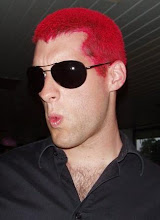11 photographs
Click here to view flickr set.
 This is an exercise in different lighting positions to create tonal variations in an object in order to provide depth clues. With the camera fixed on the tripod, a total of 11 photographs were taken using a small bust of Botticelli’s Birth of Venus.
This is an exercise in different lighting positions to create tonal variations in an object in order to provide depth clues. With the camera fixed on the tripod, a total of 11 photographs were taken using a small bust of Botticelli’s Birth of Venus.The previous exercise in softening the light showed us that a small light source will produce hard shadows where as a large source (such as light fitted with a diffuser) will create soft shadows. Various factors can influence the descriptor of a source being large or small, such as the distance from the subject, however for the purposes of this exercise the source will be diffused at all times. The source will be moved around the subject with the direction determining the highlights and shadow falls.
1. Front Lighting
Here the light is coming from the direction of the camera: this shows the least possible depth in the planes of the subject because the visible part is entirely highlighted. The shadows fall behind the subject where the camera cannot see and for this reason this can also be described as flat lighting (this can be usful in portrait photography for minimizing and softening skin texture).
2. Side Lighting
Side lighting maximizes the perception of depth by producing shadows and highlights, unlike the little depth created by flat lighting and the silhouetting of backlighting. Of the series, I am most fond of this particular photograph for the atmosphere it creates, however the position of the shadow is competing with the subject: did you notice the statue or the shadows first?
3. Behind/side
With the light placed behind the subject and slightly off to one side, the resultant photograph is that of a silhouette with a line of light picking out the edges of the offset side. The photograph fails to reveal much of the subject's depth but has produced a dramatic highlight. If the subject were a more recognisable shape, such as the contours of a model's side-profile, this could produce a very dramic piece. This works very well in this this film poster for Clint Eastwood's Gran Torino
4. Backlighting
Here the statue is completly silhouetted by placed the light to the rear of the subject as has completly failed to reveal any of its depth. The creates a certain 'drama' to the subject but without any further lighting or reflection there is no third dimension to the photograph.

No comments:
Post a Comment